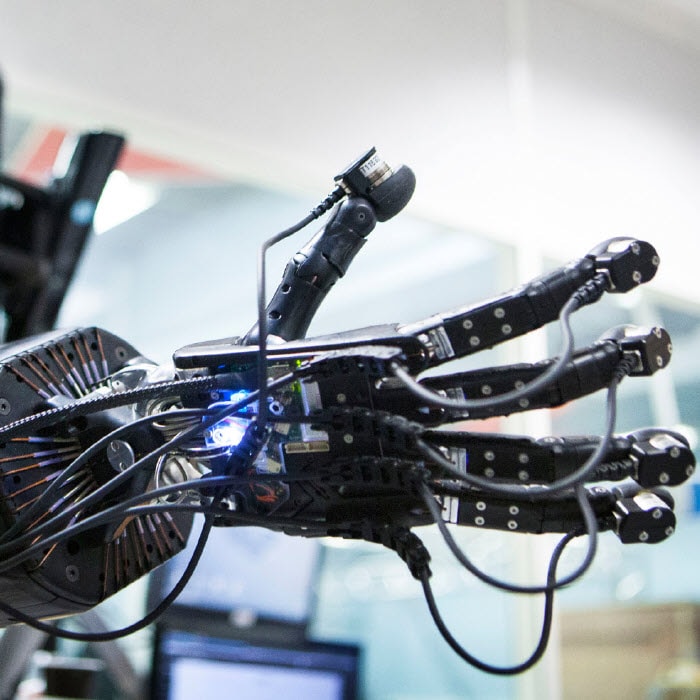The future of work for enterprise/shared services has been saved

Analysis
The future of work for enterprise/shared services
Human capital considerations
The future of work is providing enterprise service providers the opportunity to use new tools to optimize performance, improve data management, reduce costs, and provide additional services and support that improve the customer’s experience.
Introduction to the future of shared services
The future of work is here and enterprise service providers1, are starting to recognize its implications. Disruptors, such as artificial intelligence (AI), automation, and digitization are impacting the future of work and how internal and external providers support their customers, the types of services they provide, and the workforce needed to enable their operations. These digital disruptors are enabling the rapid transformation of traditional enterprise/shared services from transactional processing to higher-value, knowledge-based business and advisory services.
The future of work is providing enterprise service providers and shared services providers the opportunity to use new tools to optimize performance, improve data management, reduce costs, and provide additional services and support that improve the customer’s experience.
Future of work trends
Trend reports show that while public sector organizations recognize the disruptions of the future of work, they are not prepared to address the changing needs of their work and workforce. These trends2 show:
The way work is done is changing:
- Sixty-three percent of public sector respondents say AI and cognitive technologies will have an impact on their workforce by 2020, yet only 31 percent say they use these technologies today.3
- Sixty-three percent of enterprise/shared service organizations across multiple industries say that they expect their organizations to increase the use of robotics.4
The workforce is changing:
- A third of the federal workforce is eligible to retire, yet only 27 percent of federal agencies say they have a plan to attract top talent from outside the federal government.5 This coupled with 37 percent of “Creating a future-forward government” survey respondents citing inadequate staffing and lack of training as a challenge to modernization6 shows the difficulties enterprise service providers face when preparing for the future of work.
These changes will require new skills:
- Leaders say they are placing a higher premium on essential human skills: 60 percent complex problem solving; 46 percent cognitive abilities; 50 percent social skills.7
These changes drive the need for a new approach to career models and workforce management:
- Seventy-nine percent of public sector respondents say they consider new career models important, yet only seven percent say they are ready for the challenge.8

Future of work human capital impacts for enterprise service providers
The transition to the future of work requires enterprise service providers to plan, organize, and operate differently. They should determine work that will be automated and plan how to organize the work to meet the evolving needs of their customers and changing workforce. The workforce will need to organize around new tasks, and this means that leaders should think through what their people need to be successful in their roles. This includes who comprises the enterprise service provider workforce, how work is allocated, what skills are needed, and how the organization is structured. In the future, work will be accomplished very differently than it is today.
Enterprise service providers should consider the four following strategic steps to adapt the workforce to the future of work:
- Create a long-term roadmap
- Design new roles
- Train workers for new roles
- Manage the staff of the future

Conclusion
The future of work offers a great opportunity for enterprise service providers to increase their value. Enterprise service providers can harness the potential of automation only if they purposely think through the human implications of digital disruptors. By planning for the human side of automation, enterprise service providers can combine the efficiencies of automation with an engaged, empowered workforce to provide high-value, best-in-class services.

Endnotes
1. For this paper, enterprise service provider refers to any of the following: intra-agency shared service providers, internally consolidated management and administration functions, cross-agency or designated shared service providers, or outsourced administrative providers.
2 "A government perspective: Human Capital Trends”, Deloitte 2018.
3 "A government perspective: Human Capital Trends”, Deloitte 2018.
4 “Global Shared Services: 2017 Survey Report”, Deloitte 2017.
5 https://www.gao.gov/assets/680/670294.pdf
6 “Creating a Future-Forward Government”, Dveloitte 2018.
7 Ibid
8 Ibid
Recommendations
Digital automation tools: Helping improve capacity and efficiency in shared services
Mission support with process robotics, cognitive, and artificial intelligence




